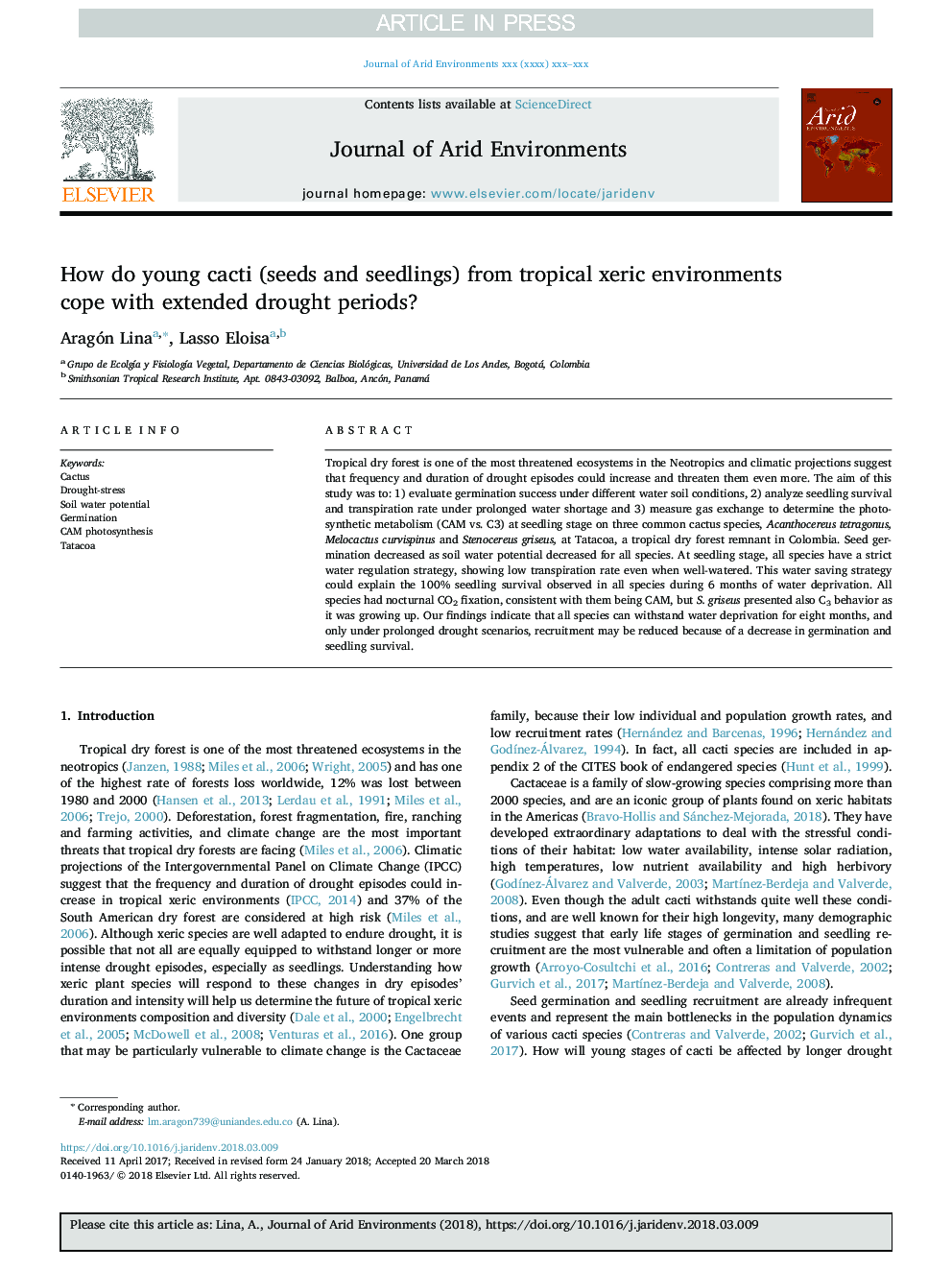| کد مقاله | کد نشریه | سال انتشار | مقاله انگلیسی | نسخه تمام متن |
|---|---|---|---|---|
| 8848481 | 1618205 | 2018 | 7 صفحه PDF | دانلود رایگان |
عنوان انگلیسی مقاله ISI
How do young cacti (seeds and seedlings) from tropical xeric environments cope with extended drought periods?
ترجمه فارسی عنوان
چگونه جوانه های کاکاوتی (دانه ها و نهال ها) از محیط های گرمسیری کریستال با دوره های خشکسالی گسترده روبرو می شوند؟
دانلود مقاله + سفارش ترجمه
دانلود مقاله ISI انگلیسی
رایگان برای ایرانیان
کلمات کلیدی
موضوعات مرتبط
مهندسی و علوم پایه
علوم زمین و سیارات
فرآیندهای سطح زمین
چکیده انگلیسی
Tropical dry forest is one of the most threatened ecosystems in the Neotropics and climatic projections suggest that frequency and duration of drought episodes could increase and threaten them even more. The aim of this study was to: 1) evaluate germination success under different water soil conditions, 2) analyze seedling survival and transpiration rate under prolonged water shortage and 3) measure gas exchange to determine the photosynthetic metabolism (CAM vs. C3) at seedling stage on three common cactus species, Acanthocereus tetragonus, Melocactus curvispinus and Stenocereus griseus, at Tatacoa, a tropical dry forest remnant in Colombia. Seed germination decreased as soil water potential decreased for all species. At seedling stage, all species have a strict water regulation strategy, showing low transpiration rate even when well-watered. This water saving strategy could explain the 100% seedling survival observed in all species during 6 months of water deprivation. All species had nocturnal CO2 fixation, consistent with them being CAM, but S. griseus presented also C3 behavior as it was growing up. Our findings indicate that all species can withstand water deprivation for eight months, and only under prolonged drought scenarios, recruitment may be reduced because of a decrease in germination and seedling survival.
ناشر
Database: Elsevier - ScienceDirect (ساینس دایرکت)
Journal: Journal of Arid Environments - Volume 154, July 2018, Pages 1-7
Journal: Journal of Arid Environments - Volume 154, July 2018, Pages 1-7
نویسندگان
Aragón Lina, Lasso Eloisa,
